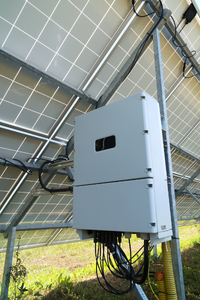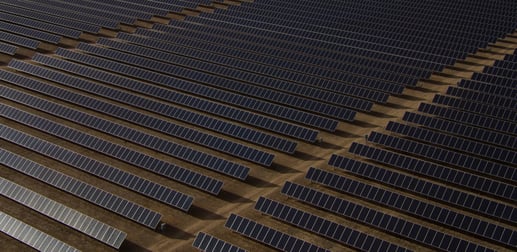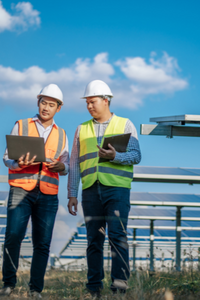Renewables have seen a dramatic uptick in popularity—and for good reason. Moving to these types of clean energy sources can minimize our carbon footprint, lessen air pollution, and reduce our dependence on less sustainable fuels.
In particular, solar PV (photovoltaic) generation saw a 23% year-over-year increase from 2019 to 2020, according to the International Energy Agency (IEA). As we continue to expand our use of solar energy, questions around its safety have arisen. And the fact is, solar energy is safe, and fire events on solar farms are rare.
Of course, with any electrical system, the potential for fire does exist. In this article, we’re exploring the numbers and statistics around solar farm fire risks and discussing why investing in solar farm fire protection is so crucial.
Can Solar Farms Catch on Fire?
Yes, solar farms can and do catch on fire. Although fires in solar farms are uncommon—the aftermath of a fire can be devastating. When a solar farm catches on fire, millions of dollars in equipment can be destroyed in a matter of minutes. Combine that with the potential for loss of life, wildfires, and other environmental impacts, and the dangers become much more apparent. This is especially true for solar farms located in rural areas where emergency response teams may be many miles away.
So, what exactly causes these fires? Typically, it’s not the solar panels themselves. Rather, components within the external containerized electrical cabinets—including the DC isolators, connectors, cables, and inverters— are often the cause. Other causes, including electrical and environmental, may include:
- System design errors
- Faulty products—often stemming from sub-par quality
- Poor installation practices or irregular maintenance
- Hot, sunny environments
- Frost, humidity, or flooding
- Damage from debris, animals, or other natural elements
How Many Fires Have Been Caused by Solar Panels on Solar Farms?
We do not know the full extent of the number of solar farm fires worldwide. The fact is, recent studies indicate that solar panel fires are underrepresented. There are a number of reasons why this might be the case. Here are two of the most pressing:
- In the United States, solar fires are often grouped into the “other” category, rather than a category exclusively for PV incidents. This can make it difficult to understand just how many fires occur on solar farms specifically, especially as solar installations on residential and commercial rooftops have also increased significantly. Essentially, it is difficult to understand if the number of fires occurring at solar farms are increasing or decreasing over time. Although these fires are categorized as “other,” the National Fire Protection Association offers an excellent resource on PV systems.
- BRE National Solar Centre’s report, “Fire and Solar PV Systems – Investigations and Evidence,” concludes that they believe there is underreporting in instances where the fires were resolved by a solar installer or maintenance engineer.

With all that said, there are some facts and figures we can share to begin to understand the prevalence of fires that occur on solar farms. One 2021 study by the Fraunhofer Institute for Solar Energy Systems found that, of the more than 2 million PV plants in Germany, .006% of them caused a fire resulting in serious damage. They also found that the majority of these fires were as a result of faulty cabling and connections, factors that could occur in any electrical system.
Overall, the data indicates that solar farm fires are unlikely, but there is—of course—always the potential for fire.
Mitigate Your Solar Farm Fire Risk
A regular solar farm fire risk assessment (FRA) is the best way to help prevent fires. Developing an FRA can reduce injury or fatalities and other risks associated with a fire. The NFPA details best practices in the installation and maintenance of solar panels on their website. Basic measures include:

- Develop a regular schedule to have PV solar systems tested by third-party experts.
- Create and clearly communicate standard quality assurance metrics.
- Establish a proactive maintenance program that includes the replacement of old/defective parts.
- Incorporate a fire suppression system.
There is no fool-proof method to completely eliminate the possibility of fire. The best way to reduce the risk of fire—and protect your people and equipment—is to understand and address your fire risks.

